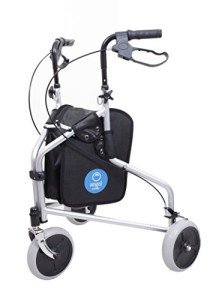Rollators are mobility aids developed to assist individuals with walking problems while promoting independence and safety. Unlike standard walkers, rollators come geared up with wheels for simple and easy navigation, making them a necessary tool for lots of elderly and disabled individuals. One of the crucial features that improve the functionality of rollators is storage. This post explores rollators with incorporated storage choices, highlighting their benefits, types, and important factors to consider when picking the best model.

A rollator is a wheeled walker that supplies assistance for individuals who might have problem with balance or endurance. Generally, rollators are created with the following functions:
The addition of storage options in rollators brings a number of advantages:
Several kinds of rollators come geared up with storage solutions:
| Rollator Type | Description | Ideal for |
|---|---|---|
| Requirement Rollator | Normally features four wheels and a sturdy frame. Storage alternatives, like an integrated bag or basket, are typically included. | General use, outdoors |
| Compact Rollator | A smaller version that folds easily for transport. While these designs typically have limited storage, numerous still consist of very little performance. | Tourists and tight areas |
| Durable Rollator | Designed for larger people, these rollators typically have better storage capacity. | Bigger users, stability needs |
| Rollator with Seat | Functions a built-in seat for resting. Storage options differ, typically consisting of baskets or shopping bags. | Those needing regular breaks |
| Walker-Carrier Combo | Function as both a rollator and a lightweight cart, ideal for shopping trips. | Grocery shopping, outdoor use |
When choosing a rollator with storage, a number of elements need to be considered to ensure that it satisfies individual requirements.
To make sure durability and optimum performance, routine upkeep is important. Users must think about the following practices:
Selecting the best size involves assessing your height and weight, in addition to checking manage height modifications to make sure that it appropriates for your stature.
Yes, some rollators are developed with bigger wheels and shock-absorbing systems that make them more appropriate for uneven terrain. It's necessary to examine the specs.
A lot of modern rollators are developed to be quickly foldable. Try to find guidelines in the user handbook that accompany your selected model.

Many basic rollators support in between 250 to 350 pounds; however, heavy-duty models can support greater weights.
Yes, numerous rollators come with the alternative of adding devices like cup holders, trays, and bags to improve performance.
In summary, a Rollator With Storage (Http://www.my.vw.ru) is an important mobility aid that empowers people while providing them with the convenience of carrying vital items. By understanding the various types, crucial functions, and upkeep requirements, users can confidently pick the right rollator that fits their lifestyle, promoting independence and comfort in daily activities. As mobility aids continue to progress, they end up being significantly essential for enhancing the quality of life for elderly and disabled people.
No Data Found!

